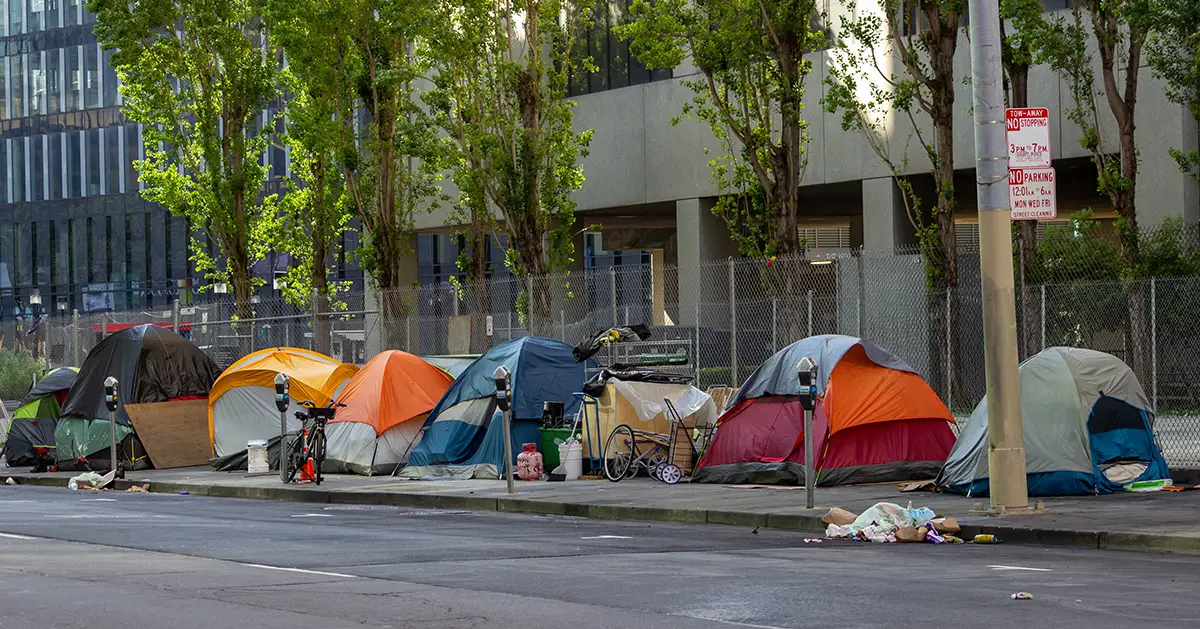By Chris Holden on January 11th, 2023

There was a slight increase in the number of Americans experiencing homelessness in 2022, according to the Department of Housing and Urban Development (HUD).
HUD's latest annual report on homelessness in the nation states that there were about 582,500 people experiencing homelessness on a single night in January, 2022. This is a slight increase of .03% over the last recorded figure in 2020.
Although there was a historic decline of veteran homelessness, the population of other groups rose more significantly.
The growth was spurred by a rise in unsheltered people, but offset by a decline in people staying at shelters. Although the number of people living without shelter increased by 3%, there was a 2% decline in the number of people living in shelter locations.
The report does show that there was a 7% increase in the number of people using shelters between 2021 and 2022. HUD says the growth in shelter use over the last year is related to pandemic restrictions being relaxed. At the height of the COVID-19 pandemic, many shelter operators had to scale back their operations to meet social distancing and other requirements.
Sixty percent of unsheltered persons live in urban areas. Suburbs are home to 21% of unsheltered people, while 19% of people without shelter live in rural areas.
Among all people experiencing homelessness in 2022, 72% did not have children with them. The number of individuals without children living in shelters increased by 5% from 2021 to 2022.
Homeless persons in families with children made up 28% of homeless people nationwide. The number of homeless people with children fell by about 10,500 since 2020. This is consistent with a longer-term decline in homelessness for families.
People who identify as African-American or Black make up about 12% of the U.S. population. But Black people make up 37% of people who are homeless, more than three times their share of the general population.
Black individuals also made up half of families experiencing homelessness. The data show that in 2022, 50% of homeless people in families with children identified as African-American or Black.
People showing signs of chronic homelessness cycle in and out of homelessness over many years. Many chronically homeless people also have substance abuse or mental health issues. This makes it harder to keep stable housing.
HUD found that 30% of homeless individuals had patterns of chronic homelessness. The number of chronically homeless people rose from 110,528 in 2020 to 127,768 in 2022.
The number of homeless veterans dropped by 11% from 2020 to 2022. This continues years of progress helping homeless veterans find permanent housing.
Veteran homelessness has fallen by 55% since 2009. HUD credits the Housing First approach for the success in helping homeless veterans find and keep stable housing.
‘The Housing First approach gets homeless veterans into permanent housing as quickly as possible. Veterans also get a range of services so that they can stay in their homes and get back on their feet.
The most recent homelessness count is compared to 2020 because of complications due to the COVID-19 pandemic.
Traditionally, the report counts the homeless population for both sheltered and unsheltered persons. But as the pandemic continued into 2021, many communities did not do outreach for those who were unsheltered.
Wait until you have a Section 8 voucher to find housing.
It usually takes months or years to reach the top of a Section 8 HCV waiting list. Any apartments you see now will likely not be available when you get your voucher.Gina Pocan says:
"Thank you, Affordable Housing Online, for being there for some of the most vulnerable people."